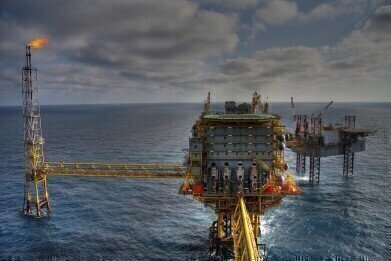Fuel for Thought
What is an Oil Well Blowout? And Why Does it Happen?
Aug 24 2014
An oil well blowout is when an amount of crude oil is released uncontrollably and accidentally from the well. These days, this occurs only after pressure release systems have failed, but prior to the 1920s, such systems were not in existence. This meant that such an occurrence was fairly commonplace and was colloquially referred to as a “gusher”.
If an open flame or even a single spark is accidentally allowed to come into contact with the oil during the blowout, catastrophic disasters can ensue.
What Causes an Oil Well Blowout?
There are several factors that contribute to causing blowouts, all of which oil drillers go to great pains to accommodate and counter. The first factor to consider is the enormous pressure of the rock formations around an oil reservoir. Oil naturally occurs over a period of millions of years, during which all of the water is compressed and pressurised out of the carbon-based substance (normally life-forms of one type or another) by the layers of sediment that form on top of it. Thus, when drilling into the rock, drillers must first be wary of its extremely pressurised state.
This pressure is counteracted by the use of mud around the drilling site, which helps to balance the hydrostatic pressure. If this balance is upset, water, gas or oil can infiltrate the wellbore or even the drill itself – a phenomenon known as a “kick” – and this can quickly escalate into a blowout if not promptly identified and addressed.
If a kick is detected, the first thing that must be done is to isolate the drill entry point by closing in the well, thus reducing the chances of a blowout. A heavier fluid will then be introduced to try and raise the hydrostatic pressure and achieve a balance. Meanwhile, the fluid or gas that infiltrated the wellbore will slowly be evacuated in a controlled and safe manner.
Types of Blowouts
There are three main types of blowouts, all of which can occur at any point of the drilling process and can have disastrous consequences. These are:
- Surface Blowouts. The most common type of blowouts, these are at risk of damaging the rig and surrounding terrain, as well as the even more serious risk of ignition and explosion. If a surface blowout is particularly forceful, it cannot be controlled alone; and so, other nearby wells (known as “relief wells”) will be drilled to introduce heavier balancing fluid at depth.
- Underground Blowouts. These are uncommon blowouts where fluid from deep, high-pressurised formations flow upwards, unchecked, to shallow, low-pressurised formations. This may not necessarily result in the release of oil above ground.
- Underwater Blowouts. Due to their location, these are the hardest blowouts to deal with. The biggest and deepest underwater blowout in history occurred in 2010 at the Deepwater Horizon well in the Gulf of Mexico. The accident was so serious that it forced the industry to contemplate re-evaluating its safety procedures, as can be seen in the article: BP Disaster Should Prompt Blowout Redesign.
Digital Edition
PIN 25.3 June/July
June 2024
Analytical Instrumentation - Recent Advances In Various Bench Scale Accelerated Oxidative Testing Methods For Fuels - Petrochemical Industry: Anton Paar Solutions Streamline Processes, Reduce H...
View all digital editions
Events
Jul 30 2024 Jakarta, Indonesia
Jul 30 2024 Jakarta, Indonesia
China Energy Summit & Exhibition
Jul 31 2024 Beijing, China
Jul 31 2024 Chengdu, China
Aug 05 2024 Moon Township, PA, USA


















